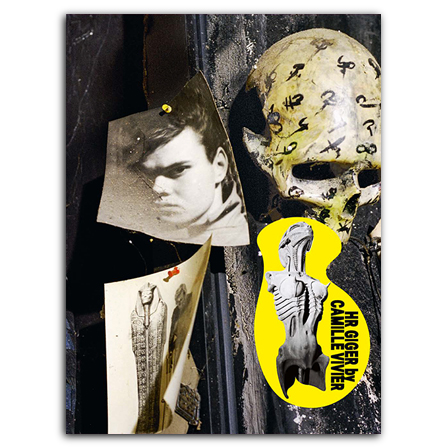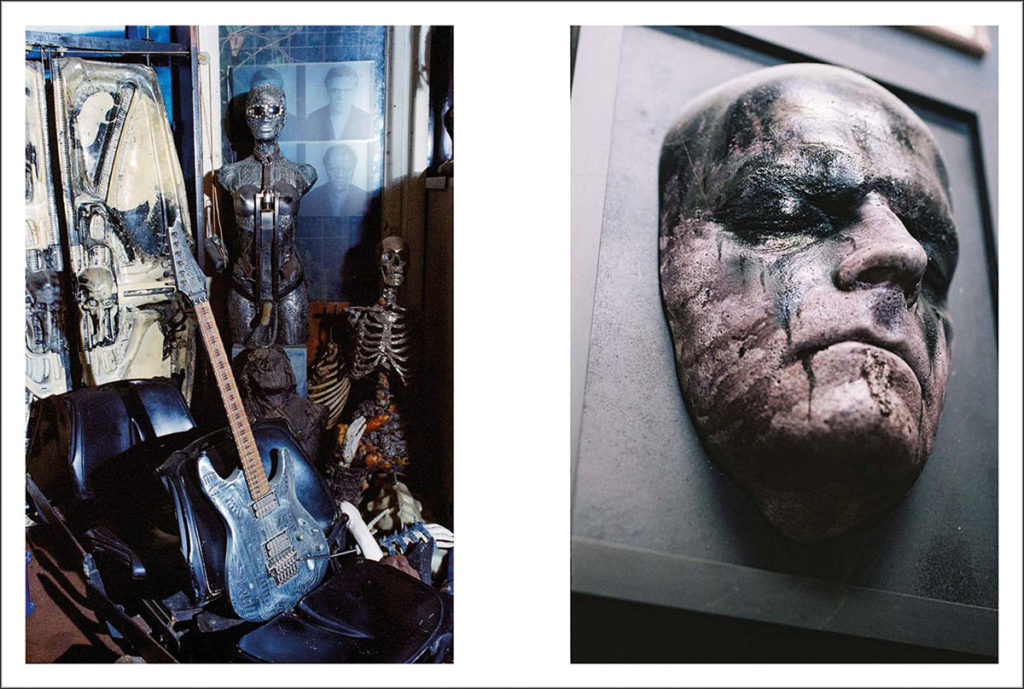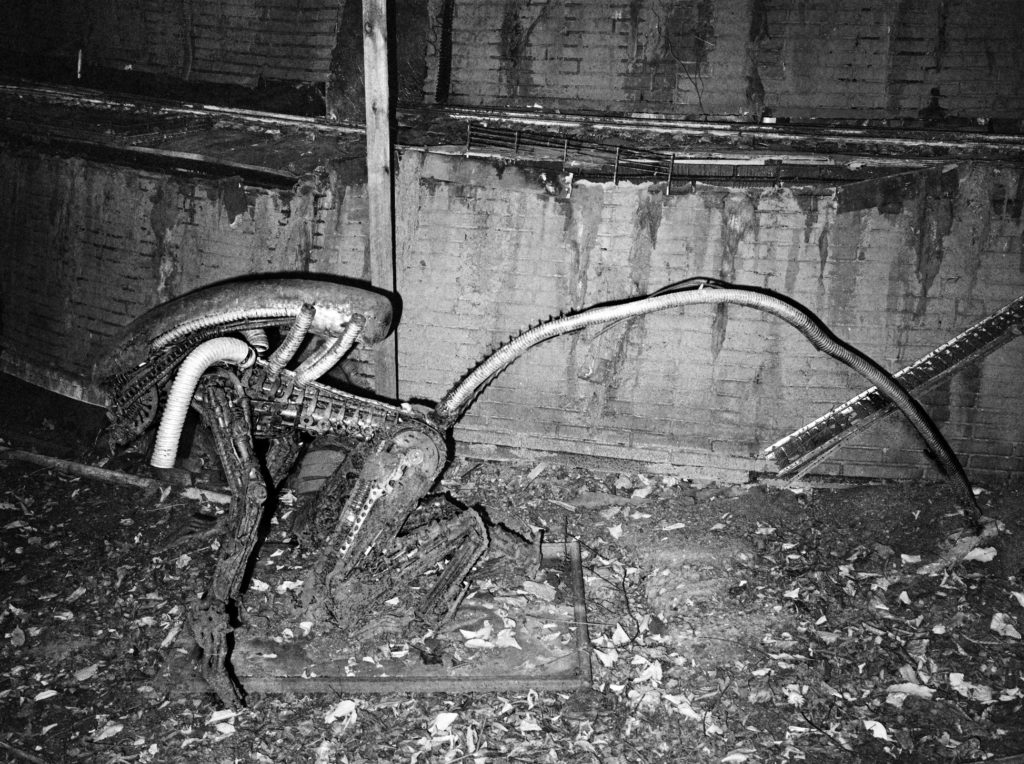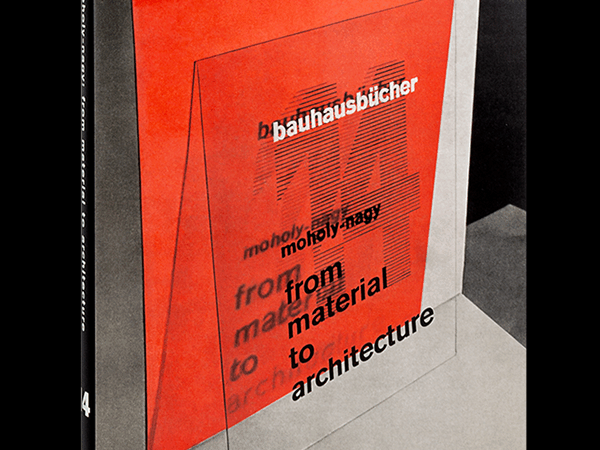
HR Giger by Camille Vivier
Photos by Camille Vivier, edited by Beda Achermann, text by Fabrice Paineau
English / German, Hardcover, 240 pages, 26 x 35 cm
€97
HR Giger (1940–2014) is best known for the nightmarish creatures and environments of 1979’s Alien, and more broadly for his transgressive (yet deeply stylized and stylish) paintings on broadly “biomechanical” themes. Much of Giger’s work, which in addition to the paintings and drawings for which he was best known included sculpture, industrial art, and even furniture, was created in his Zurich home studio, which he transformed over the decades into a real-world embodiment of his aesthetic.

HR Giger by Camille Vivier showcases the artist’s house and garden in nearly 200 photos, which explore every corner of the property—from the darkened alcoves of the interior, populated with grotesque half-human-half-machine figures in religious and erotic settings, to the more natural half-light of the garden, filtered through trees and overgrown vines. While some of the photographs make use of intentional overexposure and blurring to soften the harshness of their nightmarish subjects, the majority have a rawer documentary/vérité look that plays up dust, scratches, and paint stains, giving the feel of a well-worn, truly lived- and worked-in space. There are humorous photos interspersed among the darker ones as well: a shopping cart full of what appear to be plastic alligators in one corner of the yard, or a small “Caution: Cat” sign on the front door featuring a cartoonishly dainty feline.

Many of the exterior sculptures that populate the grounds have been worn and weathered by the mid-European climate, giving them the appearance of extraterrestrial flora and fauna imported from distant planets. Others have the distinct funkiness of improvised industrial art, with wires and welded metal protrusions. A miniature railroad snakes through Giger’s garden, a manifestation of the chained-together bones and steel that wind through his paintings, though its tracks are covered with dead leaves and dusted with snow. The overall effect is that of an abandoned, infernal amusement park slowly returning to nature—a state likely accelerated in recent years due to the house sitting mostly empty since its owner’s death in 2014.

Vivier makes an interesting aesthetic choice by adding models—exclusively nude, exclusively female—to dozens of interior and exterior shots. Nude figures recline in chairs made of pistons and skulls, interact with half-human sculptural figures, and at times take on stylized poses to become sculptural figures themselves. In a dense, dynamic essay that rounds out the main photos and serves as a sort of response to the project as well as an afterword to the book, critic Fabrice Paineau suggests that the confrontational and somewhat violative feel of combining nude models with Giger’s in situ home and artworks, to some degree an “invasion”, is nonetheless a fitting tribute to the artist:
This flesh found here, like the perfidious creature that clings like a leech to the leather of Giger’s Eames armchair, does not invoke sympathy. It could be the point of entry to the creator’s most deeply buried nightmares, to his sexuality as sharp as a steel blade.

Giger the artist pushed himself to explore the darkest parts of his mind, and used eroticism and harrowing imagery as a means to achieve a more complete understanding of the psyche, rather than for their own lurid sake. Vivier’s photos do not overly romanticize the spaces, objects, and living bodies they depict, and tend to play up ragged edges and rough surfaces instead of softening them. The book and project as a whole thus capture a sort of uneasy equilibrium between the grotesque, the sensual, and the domestic, with occasional splashes of wry humor. It’s a fitting tribute to an artist who used extreme imagery to explore the human condition.




